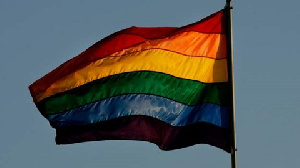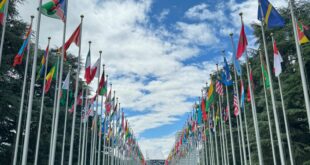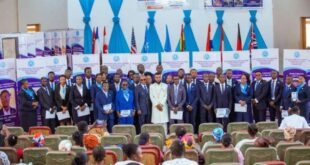- Greater inclusion of LGBT people in emerging economies is positively associated with a country’s economic development.
- There has been a steady increase in the number of rights afforded to LGBT people in emerging economies.
- Human rights violations experienced by LGBT people diminish economic output and capacity at the micro-level.
This study analyzes the impact of social inclusion of lesbian, gay, bisexual, and transgender (LGBT) people on economic development in 39 countries. When LGBT people are denied full participation in society because of their identities, their human rights are violated, and those violations of human rights are likely to have a harmful effect on a country’s level of economic development.
Several theoretical frameworks argue that the inclusion of LGBT people is linked to a stronger economy. In the human capital approach, inclusion allows LGBT people to achieve their economic potential when they can get education and training that improves their productivity and when they are treated equally in the labor market. The capabilities approach suggests that greater rights and freedoms improve individual well-being by expanding individuals’ capabilities to be and do what they value. The post-materialist demand for human rights theory suggests that greater economic development might make countries more likely to respect the rights of LGBT people, as LGBT people can freely organize and push for legal changes and as public opinion shifts to support greater individual autonomy and minority rights. And the strategic modernization approach posits that countries hoping to present themselves as more visibly “modern” and successful to potential trading partners might be using LGBT rights strategically as a way to promote and expand economic opportunities.
Up to this point, little empirical research has tested this theoretical connection, particularly for the emerging economies that are the focus of this paper. This study analyzes 39 countries, 29 of which are “emerging economies” (those countries that are experiencing high levels of economic growth and investment) and 10 of which are countries of interest (those that have active and engaged LGBT social movements and are of particular significance to global development institutions). Given both the potential for rapid change in rights and income-level for low and middle-income economies, this study provides a new perspective to identify the relationship between LGBT rights and economic development.
Research Design
In this study, we define “LGBT” to mean sexual and gender minorities. “Sexual minorities” include anyone whose sexual orientation includes people of the same sex or gender, and “gender minorities” include anyone whose gender identity and/or gender expression is different from the gender norms associated with their sex assigned at birth. To assess whether the theoretical link is confirmed by real-world data, we refine the concepts of “inclusion” and “development” into more concrete terms and measures. The analysis takes two approaches.
First, this study uses a “micro-level” approach that focuses on the experiences of LGBT individuals and defines inclusion as the ability to live one’s life as one chooses (what Amartya Sen calls “freedoms” in the capabilities approach). In the micro approach, we conduct an extensive literature review of research on human rights to identify barriers to freedoms for LGBT people that can have an effect on economic development.
Under the “macro-level” approach, we define inclusion as the legal rights of LGBT people, measured through two newly-developed indices, one reflecting the rights of transgender people and the other the rights of LGB people. Economic development is the broad macroeconomic outcome, measured for each country by per capita gross domestic product (GDP) and the Human Development Index (HDI). In this statistical part of the study, multivariate regression is used to analyze the effect of LGBT rights on economic development after controlling for other factors that influence development.
Findings
The micro-level analysis found substantial evidence that LGBT people in our sample countries are limited in their freedoms in ways that also create economic harms:
- Police officers unjustly arrest, detain, jail, beat, humiliate, and extort LGBT people, taking LGBT people out of productive employment.
- LGBT people face disproportionate rates of physical, psychological, and structural violence, which can restrict someone’s ability to work because of physical injuries and psychological trauma.
- Workplace discrimination causes LGBT people to be unemployed or underemployed, which mean their full productive capacity is not being used.
- LGBT people face multiple barriers to physical and mental health, which reduces their ability to work and their productivity in the workplace.
- LGBT students face discrimination in schools by teachers and other students, which hampers their learning and encourages students to drop out, in turn reducing their skills and knowledge related to the workplace.
At this micro-level, the costs to the economy of just these five examples of exclusionary treatment include lost labor time, lost productivity, underinvestment in human capital, and the inefficient allocation of human resources through discrimination in education and hiring practices. The decreased investment in human capital and suboptimal use of human resources, in turn, act as a drag on economic output at the broader economy level.
The macro-level analysis reveals a clear positive correlation between per capita GDP and legal rights for LGB and transgender people across countries, as measured by the Global Index on Legal Recognition of Homosexual Orientation (GILRHO) and the Transgender Rights Index (TRI) respectively. The simplest correlation shows that one additional right in the GILRHO (out of eight rights included) is associated with $1,400 more in per capita GDP and with a higher HDI value. In other words, countries with more rights for LGBT people have higher per capita income and higher levels of well-being. The positive correlation between LGBT rights and the HDI suggests that the benefits of rights extend beyond purely economic outcomes to well-being measured as educational attainment and life expectancy.
The relationship remains strong for GDP per capita even after taking into account other factors that influence development, although the effect is smaller. The impact of an additional right on per capita GDP is approximately $320 after those controls, or about 3% of the average GDP per capita in our sample. A positive correlation with the HDI is not seen in some models, however.
Unlike with the micro-level analysis, in the macro-level analysis, we do not draw a firm conclusion about the direction of the causal link, that is, whether more rights cause higher levels of development or whether more developed countries tend to have more rights. The theoretical perspectives suggest that both directions are likely at work. The micro-level findings, aggregated up to an economy-wide level, support the idea that exclusion leads to lower levels of development, and are consistent with the macro-level findings.
Two additional findings emerge that bolster an interpretation of a strong link between rights and development. First, the correlation between rights and economic development appears to vary across different rights. In particular, the analysis suggests that anti-discrimination laws covering sexual orientation have an especially strong correlation with GDP per capita. The importance of nondiscrimination laws could be related to their stronger connection to the treatment of LGBT people in the workplace and other settings that have direct economic relevance. Second, the correlation of additional LGBT rights and economic development is not simply the result of increasing gender equity within a country, since the impact of LGBT rights is strong even when taking into account an indicator of gender equity in the statistical model.
Recommendations
We recommend further research and data development efforts in order to better understand the links between LGBT inclusion and economic development. Some extensions of this work are possible with existing data:
- Expand the study to a broader set of countries and years; since the 39 countries in this study’s sample were not randomly chosen, the generalizability of these findings is limited.
- Use different economic outcome measures to compare to LGBT rights, such as GDP growth rates, tourism measures, and foreign direct investment.
- Study the determinants of legal rights for LGBT people across the world.
- Create a database of existing research from a wide variety of countries to use both for additional comparisons and to inform the creation of new indicators.
Other extensions of the research will require the collection of new data on the lived experience of LGBT people that can be compared across countries. New data will be especially important since formal legal rights on their own might not be good indicators of the lived experience of LGBT people and the degree of inclusion in society. In particular, these measures should capture life outcomes that are relevant to the economic contributions of LGBT people: health, education, earnings, poverty, family structure, living situations, access to social services, coming out, discrimination, and violence. This need for better data also provides an additional link and potential collaboration between human rights scholars and economic development researchers.
CHECK OUT THIS: 44 villages in Drobo State support the Anti-LGBTQI+ Bill, warns MP not to vote against it
Finally, we strongly recommend that research within all development areas incorporate concerns about LGBT people. The findings in this study demonstrate links between LGBT people’s lives and their potential economic contributions at the national level, making LGBT inclusion relevant for development agency programs. Mainstreaming the inclusion of LGBT people within development research would mean looking at the experiences of LGBT people in food policy, poverty alleviation, gender empowerment, democracy and governance, education, health, conflict situations, gender-based violence, and other areas in which LGBT people are likely to experience specific challenges to meeting their needs.
This study and a broadened research agenda can assist development agencies and other stakeholders to better understand how the full inclusion of LGBT people could improve economic outcomes for all countries, including developing countries, as well as provide evidence of the fulfillment of the human rights of LGBT people.
Source: Thepressradio.com
 Home Of Ghana News Ghana News, Entertainment And More
Home Of Ghana News Ghana News, Entertainment And More





